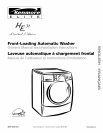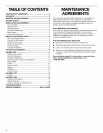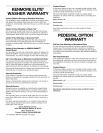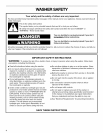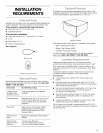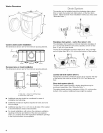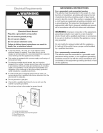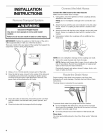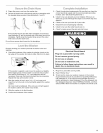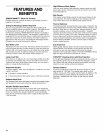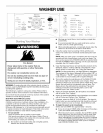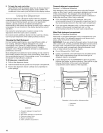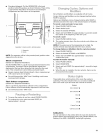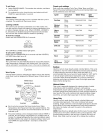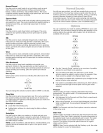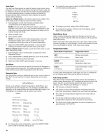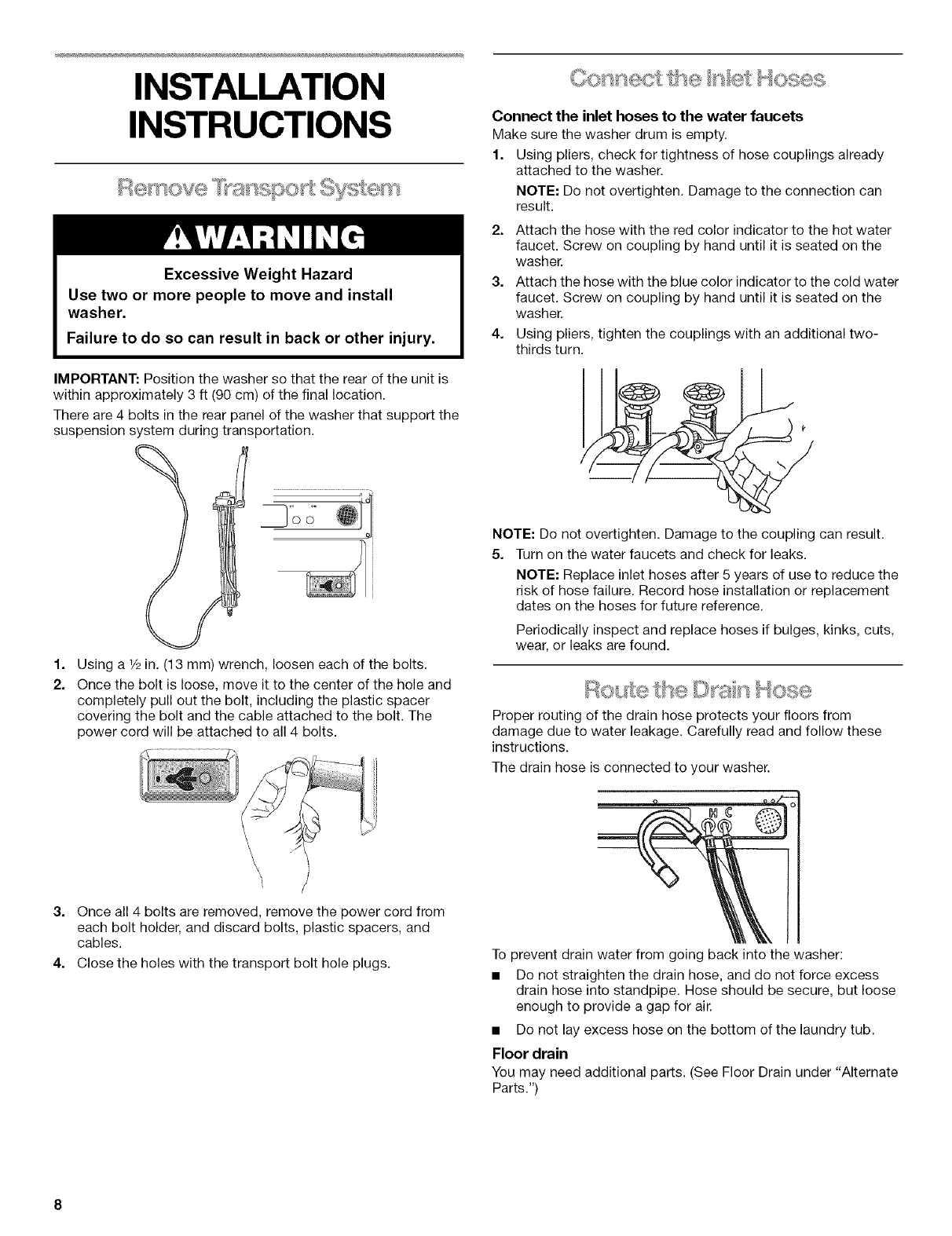
INSTALLATION
INSTRUCTIONS
Excessive Weight Hazard
Use two or more people to move and install
washer.
Failure to do so can result in back or other injury.
IMPORTANT: Position the washer so that the rear of the unit is
within approximately 3 ft (90 cm) of the final location.
There are 4 bolts in the rear panel of the washer that support the
suspension system during transportation.
1.
2.
Using a 1/2in. (13 mm) wrench, loosen each of the bolts.
Once the bolt is loose, move it to the center of the hole and
completely pull out the bolt, including the plastic spacer
covering the bolt and the cable attached to the bolt. The
power cord will be attached to all 4 bolts.
3. Once all 4 bolts are removed, remove the power cord from
each bolt holder, and discard bolts, plastic spacers, and
cables.
4. Close the holes with the transport bolt hole plugs.
Connect the inlet hoses to the water faucets
Make sure the washer drum is empty.
1. Using pliers, check for tightness of hose couplings already
attached to the washer.
NOTE: Do not overtighten, Damage to the connection can
result.
2. Attach the hose with the red color indicator to the hot water
faucet. Screw on coupling by hand until it is seated on the
washer.
3. Attach the hose with the blue color indicator to the cold water
faucet. Screw on coupling by hand until it is seated on the
washer.
4. Using pliers, tighten the couplings with an additional two-
thirds turn,
NOTE: Do not overtighten. Damage to the coupling can result,
5. Turn on the water faucets and check for leaks.
NOTE: Replace inlet hoses after 5 years of use to reduce the
risk of hose failure. Record hose installation or replacement
dates on the hoses for future reference.
Periodically inspect and replace hoses if bulges, kinks, cuts,
wear, or leaks are found.
Proper routing of the drain hose protects your floors from
damage due to water leakage. Carefully read and follow these
instructions.
The drain hose is connected to your washer.
To prevent drain water from going back into the washer:
• Do not straighten the drain hose, and do not force excess
drain hose into standpipe. Hose should be secure, but loose
enough to provide a gap for air.
• Do not lay excess hose on the bottom of the laundry tub.
Floor drain
You may need additional parts. (See Floor Drain under "Alternate
Parts.")



